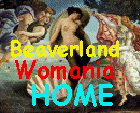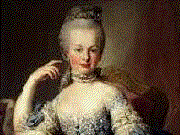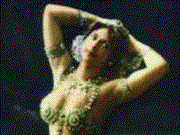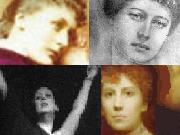 Who was
Who was
Mona
Lisa?
by Akira Kato
June 12, 2002
To view the animation below, please make your browser Javascript-enabled.
So, who t’heck was Mona Lisa?
The world’s most famous face—Mona Lisa—may have belonged to a famous (or infamous) Italian lady nicknamed “the Tigress”, according to a decade of research by a German art historian.
The true identity of the model for Leonardo da Vinci’s painting—painted between 1500 and 1505—has puzzled art historians for years.
The “Tigress” turns out none other than Caterina Sforza, the Duchess of Forlì and Imola. The above painting was
produced in 1487, when Caterina was 25, by Italian artist Lorenzo di Credi.
In fact, Leonardo later painted her when she was around the age of 40.
Although the proud pose, the position of the arms and the overall structure appears similar to those of Mona Lisa, there are some
discrepancies.
For example, Mona Lisa is well-known for her simple
beauty without expensive jewelry or lavish dress. With her well-balanced features, slightly pointed chin,
and heavy eyelids, the face of Mona Lisa represents
Leonardo’s vision of ideal beauty. Unlike the richly
ornamented women painted by his contemporaries, she displays no
jewelry and wears a simple dress and a black veil.
On the contrary, Caterina Sforza remained fastidious in her garment
and accessories, and wore expensive clothes and jewelry to impress her subjects with her status and beauty.
Art historians had previously believed that Leonardo’s sitter was a young Florentine woman who married Francesco del Giocondo in 1495 and thus came to be known as “La Gioconda”. Other theories suggested she was a transvestite, a prostitute or even Leonardo himself in drag.
If you have ever read his biography, you definitely know that Leonardo was a meticulous man as his notebooks show. He recorded in his notebooks
the names of his sitters. Strangely enough, however, nowhere can be found any records of the model for Mona Lisa. Why is that? Who posed for him?
A scientist at Bell Labs suggests that Leonardo painted himself, and was able to prove it by analyzing the facial features of Leonardo’s face and that of the famous woman. The scientist digitized both the self-portrait of the artist and Mona Lisa, flipping the self-portrait and merging the two images together using a computer, and noticed the features of the face aligned perfectly.
Here’s how Leonardo turns into Mona Lisa, and vice versa:




























